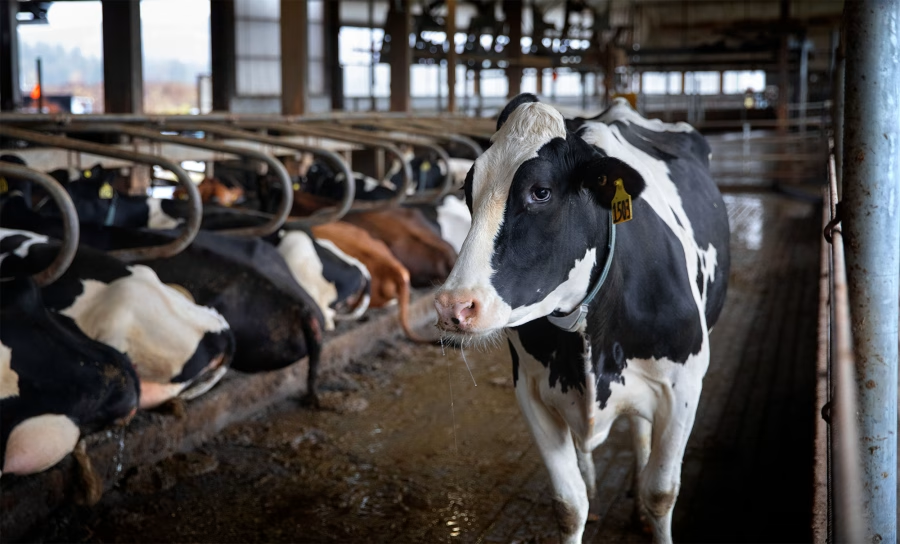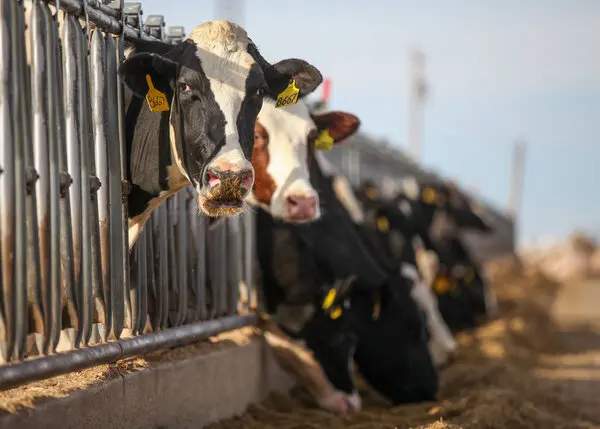Discover how economic changes and new breeding practices are affecting global bovine semen sales and boosting dairy farm profits.
Summary: Are you curious about the latest buzz in the global bovine semen market? The 2023 trends reveal a roller coaster ride for dairy and beef semen sales, shaped by economic twists, innovative breeding techniques, and shifting geopolitical landscapes. As we delve into the details, a 4% drop in total semen sales marks the second consecutive year of decline; domestic dairy semen sales fell by 5%, while beef semen sales increased slightly; critical markets like China and Russia faced economic and geopolitical challenges, reshaping export dynamics; notably, gender-selected dairy semen and heterospermic beef semen usage surged, reflecting strategic shifts in reproductive practices. Despite challenges, the overall value of exported semen reached a record $306 million, driven by a rise in average blend prices. “The high value of young beef crossbred calves makes it very appealing to dairy producers to produce F1 calves for the feedlots amidst rising costs of raising a heifer,” explained Jay Weiker, president of NAAB.
- Despite a 4% total decline, the value of exported semen soared to a record $306 million.
- Domestic dairy semen sales continued to fall by 5%, while beef semen sales saw a minor increase.
- Economic and geopolitical struggles in critical markets like China and Russia significantly impacted export volumes.
- Innovations such as gender-selected dairy semen and heterospermic beef semen demonstrated notable growth.
- Producers increasingly turned to crossbred calves to offset the rising costs of raising heifers.

The cow semen business is continually developing, owing to technological advancements, market needs, and creative reproductive procedures. U.S. producers are capitalizing on new chances to accelerate genetic development and herd profitability. The National Association of Animal Breeders (NAAB) statistics give insight into current and upcoming trends. Dairy farmers must be up to date on industry developments. It allows you to traverse the market more successfully. It guarantees you use the finest reproductive techniques to attain your financial objectives. So, what key trends will impact the worldwide bovine semen market in 2023? Let’s delve in and look at the elements influencing the future of your dairy and beef businesses.
| Category | 2023 Sales (in million units) | % Change from 2022 |
|---|---|---|
| Total Units Sold | 66 | -4% |
| Dairy Units (Domestic + Export) | 46.9 | -5% |
| Beef Units (Domestic + Export) | 19.2 | -2% |
| Domestic Dairy Units | 15.5 | -4% |
| Domestic Beef Units | 9.4 | +400k units |
| Dairy Exports | 29 | -8% |
| Beef Exports | 4.5 | -6% |
| Gender Selected Dairy Units (Domestic + Export) | 8.4 | +518k units |
| Heterospermic Beef Units | 1.8 | New |
Slumping in Bovine Semen Sales
The year 2023 has seen substantial developments in the bovine sperm business. According to the National Association of Animal Breeders (NAAB), overall unit sales fell 4%, indicating that a slump was building after COVID-19. Economic uncertainty and geopolitical concerns have played a significant influence. For example, domestic dairy semen sales fell by 4%, continuing their four-year decline. Dairy producers’ shift to beef genetics and higher production expenses have contributed to the decline. On the other hand, the domestic beef semen market broke the trend, increasing by 400,000 units, mainly owing to the incorporation of beef genetics into dairy herds to generate higher-quality crossbred calves.
Globally, factors such as China’s economic downturn and Russia’s geopolitical concerns have reduced demand for imported sperm. Despite these challenges, the overall value of exported semen reached a record $306 million, representing an increase in average blend prices. Overall, the landscape is characterized by strategic changes and a drive for novel reproductive techniques, such as the increased use of gender-selected and heterospermic sperm.
Total bovine semen sales fell 4% in 2023 to 66 million units. Dairy units declined by 5%, losing around 2.5 million units and totaling 46.9 million. Beef units were just a little behind, with a 2% decrease that eliminated 400,000 units, culminating in 19.2 million units sold. Both industries are suffering, but the causes for these declines are complex: the post-COVID economic crisis, increased manufacturing costs, and changing foreign demand. Adaptability and creativity are more crucial than ever.
Domestic Dairy Sales Are Sliding, But There’s a Beefy Silver Lining
Let’s chat about what’s going on at home. The stats don’t lie: domestic dairy semen sales are gradually falling. Over the last four years, we’ve witnessed a 3.7 million unit decline. This year was no better, with sales sliding by 700,000 to 15.5 million. This troubling trend raises many issues about the future of dairy production in the United States.
On the other hand, the domestic beef semen market presents a different picture. It has shown remarkable resilience, with a growth of 400,000 units in 2023, reaching 9.4 million. This increase is primarily driven by dairy farmers who have turned to beef genetics to maximize their herds. And it’s paying off: 7.9 million beef units were used in dairy animals. Why? The combination of beef and dairy genetics produces high-value crossbred calves. These calves thrive in feedlots and command higher market prices, providing a reassuring outlook for the beef semen market.
So, what is the approach for this shift? It all comes down to economics. Raising heifers is costly; getting them to their first calving requires significant resources. Producers may increase the value of their calves for beef production by adding cattle genetics, providing them with a financial safety net. Using beef semen in dairy herds may balance the requirement for replacement heifers and create money from high-value crossbred calves.
Global Politics and Economics Shake Up the Bovine Semen Market
Have you ever considered how the global pulse of politics and economics might shake up even the bovine sperm market? It’s intriguing. Let us start with China. China, formerly a dairy import powerhouse, has seen a significant decrease in demand for foreign genetics due to the economic downturn. This downturn, primarily driven by [specific economic factors], has led to A substantial drop in U.S. bovine semen exports to this critical market, compelling producers to seek alternate markets for their goods.
Now, let us focus our attention on Russia. Geopolitical concerns and the weight of economic sanctions have also dampened the market. The result? A significant decrease in agricultural imports, especially U.S. bovine sperm. These sanctions have effectively shut off what was previously a vibrant market, adding another degree of difficulty for U.S. exporters.
And then there is Brazil. While the country’s cattle sector is a worldwide powerhouse, transitioning to beef production, notably Zebu-type genetics, has decreased reliance on traditional bovine semen imports. This strategic move, driven by [specific reasons], implies fewer options for U.S. exporters to enter Brazil’s market, further complicating the export environment. These instances demonstrate how intertwined the bovine semen market is with global economic and political trends. From economic downturns to strategic moves in livestock breeding, every turn of the globe influences the demand and supply of bovine genetics.
Gender-Selected Dairy Semen Is Becoming the New Norm
Now, let’s explore the changing landscape of bovine semen types. Have you noticed the strategic nature of our breeding choices? One of the most significant developments 2023 is the increasing popularity of gender-selected dairy semen. Producers are increasingly opting for this type because it enhances the likelihood of having female progeny, which is crucial for replacing old dairy cows and boosting milk production. According to the 2023 Semen Sales Report, domestic consumption of gender-selected dairy semen surged by 7%, totaling 518,000 units! Imagine the potential for refining your herd’s genetic composition and enhancing overall efficiency, instilling a sense of optimism in the industry’s future.
But that is not all. Have you ever heard of heterospermic beef semen? This innovative product combines sperm from different bulls to increase genetic diversity within the herd. In 2023, this type of semen gained significant traction, with 1.8 million units sold. Why is this shift significant? It provides a strategic advantage by reducing the risk of genetic abnormalities and enhancing herd performance. Using heterospermic sperm increases the likelihood of superior offspring characteristics, improving overall herd health and production.
The strategic reasons for these adjustments are evident. By using gender-selected sperm, dairy producers can accurately plan for future herd needs, guaranteeing that they produce the exact number of replacement heifers required. At the same time, the use of heterospermic sperm represents a more significant trend toward genetic innovation to create more robust, productive, and genetically diverse herds. These strategies address urgent economic needs while laying the groundwork for long-term herd management.
The Rise of Heterospermic Beed Semen
Among new advances in reproductive management, the increased usage of heterospermic sperm stands out. Heterospermic semen, a mixture of sperm from many bulls, is gaining popularity because of its capacity to add genetic variety and improve herd health.
Producers are increasingly using heterospermic semen to lessen the danger of genetic abnormalities by integrating the genetic features of many bulls. This mixing guarantees no one genetic line dominates, increasing genetic diversity and promoting reproductive success and disease resistance. This simplified administration promotes consistent and desired results, making the investment profitable.
Finally, the utilization of heterospermic semen represents a fundamental change in reproductive control approaches. Producers may improve their operations’ efficiency and production by using genetic variety and focused breeding tactics, as well as the genetic resilience of their herds.
Crossbred Bulls Have Rocketed to the Top
Did you know mixed bulls have become the third-largest dairy breed in the current NAAB dairy cross-reference database? What’s remarkable is that these bulls, born and reared in the United States, are seldom exported to other markets that prefer purebred or dual-purpose animals. Crossbreeding has taken off since 2020, with a significant increase in the sale of dairy crossbred semen. We have also noticed increased beef crossbred semen sales, which began in 2018. In the dairy industry, Holstein-Jersey crosses predominate, but beef crossbreds are mainly labeled composites.
The United States is the only area where crossbreds are evaluated genomically due to dependable anticipated transmitting ability and expected progeny differences. This allows mixed bulls to compete with purebreds in terms of marketing. U.S. producers prioritize commercial cow profitability instead of focusing on a specific breed. But remember to consider the value of purebred connections. They continue to play an essential part in the United States’ genetic assessment system, which has traditionally depended on phenotypic data from breed organizations and the Dairy Herd Improvement Association (DHIA).
The Bottom Line
Overall, the 2023 Bovine Semen Sales Report presents many problems and possibilities. We’ve witnessed a noticeable decrease in overall unit sales but a significant rise in high-value categories such as gender-selected and heterospermic semen. Global economic forces continue to influence the industry. Still, creative breeding tactics and technology are emerging as critical instruments for remaining competitive. Are you using gender-selected sperm to maximize your herd’s composition? Have you explored the economic advantages of introducing cattle genetics into your dairy operation? These tactics may be the key to achieving improved efficiency and profitability. So, what will your next step be?













